8 Films For Architects You Probably Haven’t Seen Yet




But cinema can also offer design professionals much more than just a new perspective. Films can be a source of inspiration, helping to trigger new ideas and spark the creativity that is so essential to good architectural design. They can also be a valuable educational tool, teaching architects about different cultures and historical periods. The films in this list aren't necessarily about architecture themselves, but they all have a lot to offer those who are interested in the built environment.
Brazil (1985)
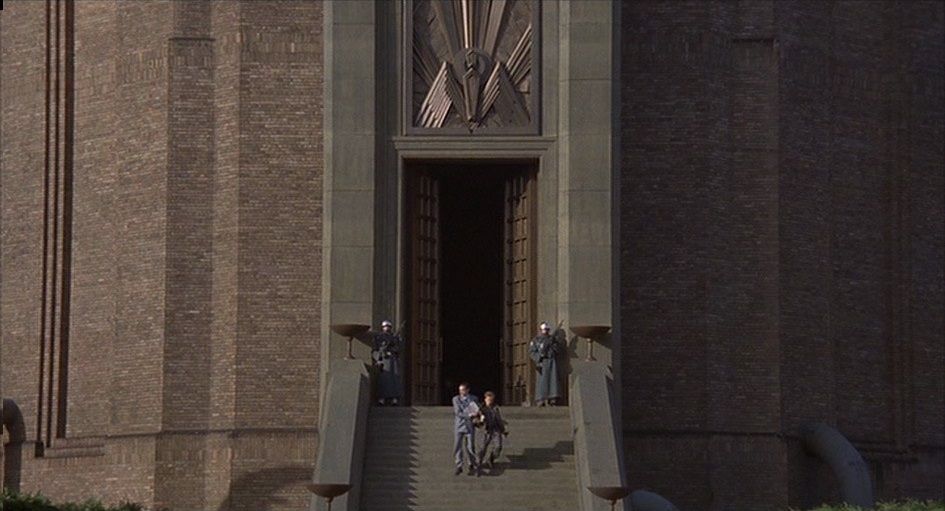
Terry Gilliam’s satire of a techno-bureaucratic society is a terrifying prediction of a dystopian world. Sam Lowry is a low-level clerk working for the Ministry of Information, who is caught between carving himself out a space within the establishment and being with revolutionary Jill, whom appears to him in his fantasies. The film is set in a horror urban setting, industrialised to the extreme and mercilessly regulated by mechanical automation. Dark, imposing buildings creating corridors that lead nowhere are broken up by oases of private spaces for the elite such as restaurants and luxury apartments. This representation of class separation is often used in dystopian visions (see Blade Runner, Metropolis) where society is controlled by authoritarian bureaucracy. Brutalist government buildings in giant cubes loom over the narrow, grey streets imposing their authority on citizens on the street, and when violence invades these spaces, onlookers blissfully ignore these scenes, instead allowing the bureaucracy to dilute its impact. Running through all of it is the ever-present ducting, which amass, tangled and chaotic in the depths of the city, a visual metaphor the psychosis experienced by the protagonist.
In Bruges (2008)
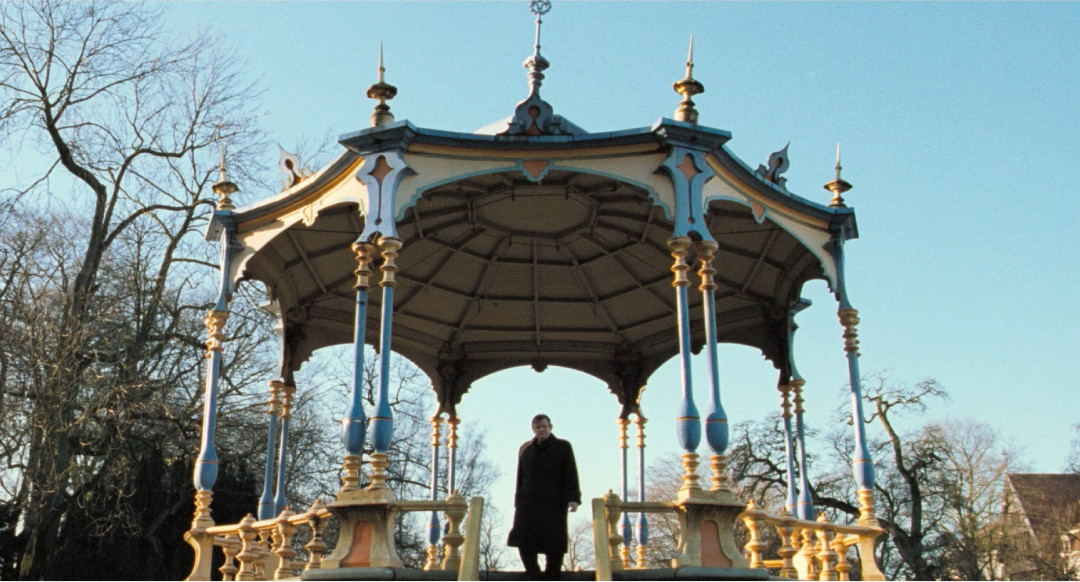 Directed by Matthew McDonagh, Blueprint Pictures
Directed by Matthew McDonagh, Blueprint Pictures
“Bruges is a shithole.” As soon as Colin Farrell’s Ray arrives in Bruges, he can barely hold back his disgust. Arriving with fellow hitman Ken, played by Brendan Gleeson, after a botched job forced them to throw their guns into the Thames River and flee to the Belgium city. Themes of judgement and purgatory are represented in the Catholic symbolism that is ever present in In Bruges, and prominently in the architecture of the medieval city. As they await for further orders, and as the details of the job gone wrong begin to emerge, the elegant and imposing architecture of the city closes in on the protagonists. Ray identifies it immediately; Bruges is a jail, and they’re awaiting trial. Surrounded by prominent landmarks, such as the Jerusalem Church, the Church of Our Lady and the Grote Markt, the characters undergo several temptations and moral tests. The Bruges Belfry and the courtyard of the Gruuthuse serve as the setting of the climax, as the characters must make their own deadly moral decisions.
Infernal Affairs (2004) / The Departed (2006)
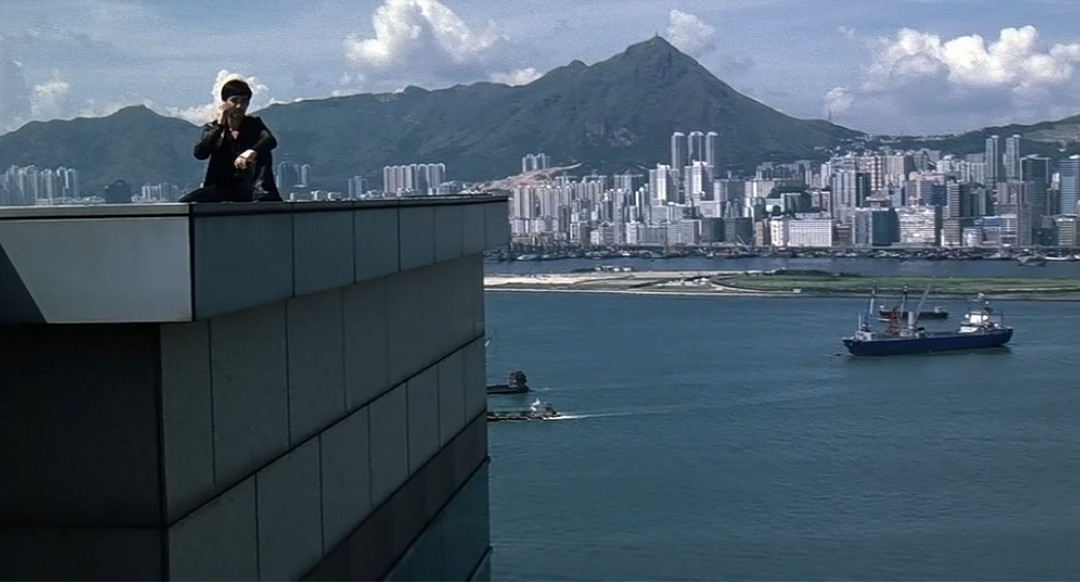 Directed by Andrew Lau & Alan Mak, Media Asia Films
Directed by Andrew Lau & Alan Mak, Media Asia Films
For a lesson in using setting to build a narrative, there’s no beating a double-feature of Infernal Affairs and The Departed. As a remake of Infernal Affairs, the plot of The Departed stays true to the original. Where the movies start to differ is in the way they use cityscapes to support the narrative and to reflect the character’s personalities. Hong Kong in Infernal Affairs has been turned into a “blank city”, one that is devoid of any identifiable landmarks. Scenes are shot in non-descript locations, such as empty car parks, ground level shops and rooftop buildings. Even famous buildings are digitally removed from the skyline. The melancholy generated by the lack of features reverberates in the actions and psyche of the main characters, as time and morals begin blending beyond comprehension.
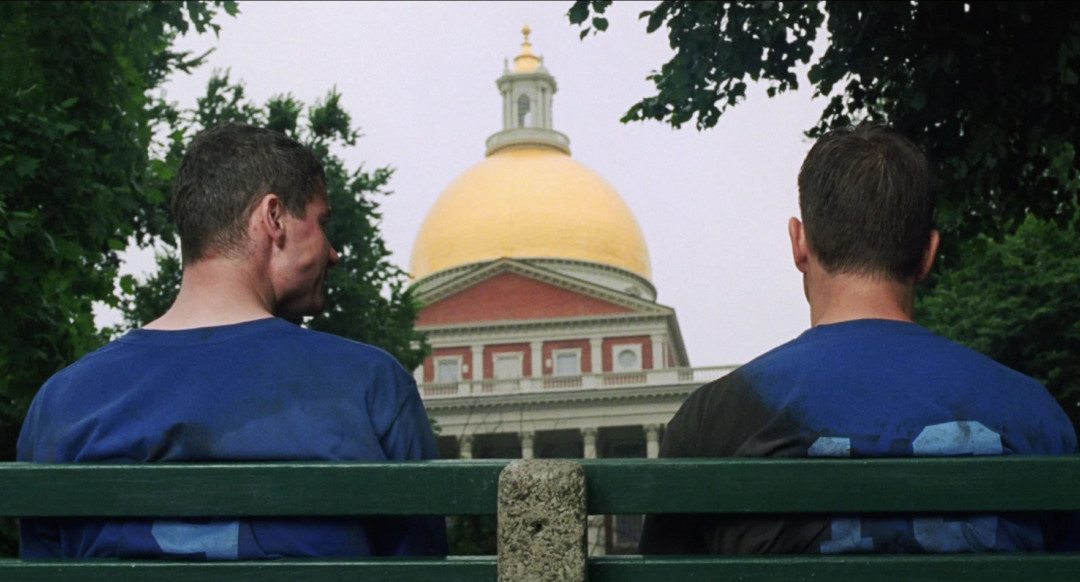 Directed by Martin Scorsese, Plan B Entertainment
Directed by Martin Scorsese, Plan B Entertainment
The Departed on the other hand, set in the city of Boston, displays an augmented city; one that both influences and is influenced by the multiple cultures within. It is in a state of perpetual criminal activity, where the Irish ethnic gangs do war with the police on a daily basis. From the first few lines of the film’s opening monologue, the city is set up like a cultural battleground, with each group vying for position. In The Departed, the city and culture are one in the same. While Infernal Affairs setting implies it could take place anywhere, The Departed could have only happened in Boston.
Akira (1988)
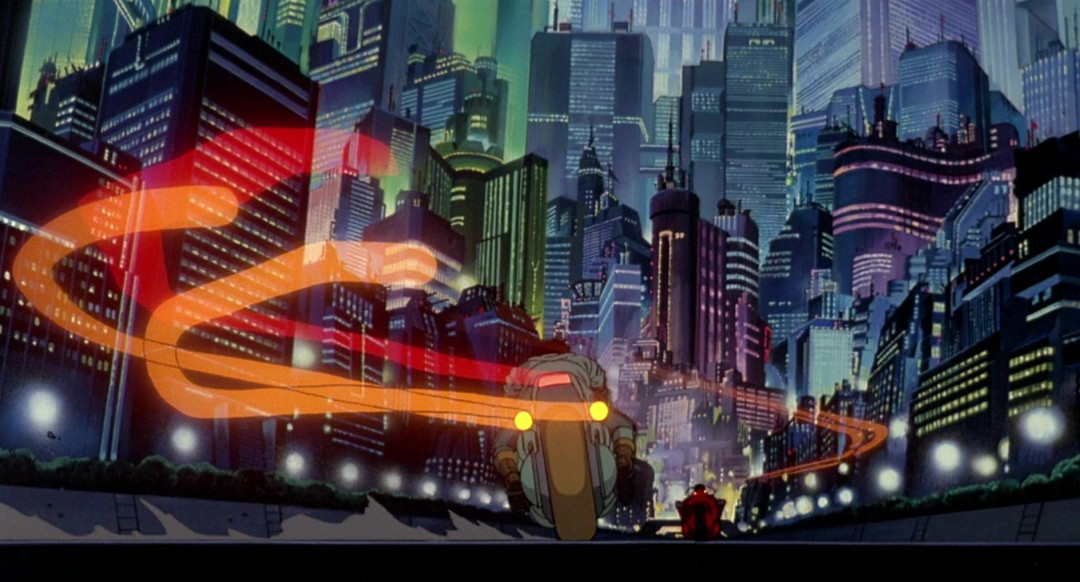 Directed by Katsuhiro Otomo, Tokyo Movie Shinsha
Directed by Katsuhiro Otomo, Tokyo Movie Shinsha
As the world left the 70s behind and started hurtling through the 80s, the world of the future began to take shape (at least to a few forward thinkers). Skyscrapers began rising from the ground, and digital innovation brings technology closer than ever before. As people came to grips with the positive and negative aspects of a digital world, some began to imagine the frightening consequences of technology. The futurist visions of Akira are horrifying to behold. Technology in Neo-Tokyo has accelerated the class divide. Motorcycle gangs roam the streets while protests are violently and fatally shut down, and a corrupt government uses any means necessary to cling on to power. In between the neon-clad skyscrapers clumped together are blocks and blocks of unfinished construction sites, as well as a half built Olympic stadium. In the 80’s, Japan’s economic bubble had burst, leaving behind skeletons of capitalist greed. The characters and viewer is “liberated” from this purgatory with the levelling of the entire city at the conclusion of the film.
Who Framed Roger Rabbit (1988)
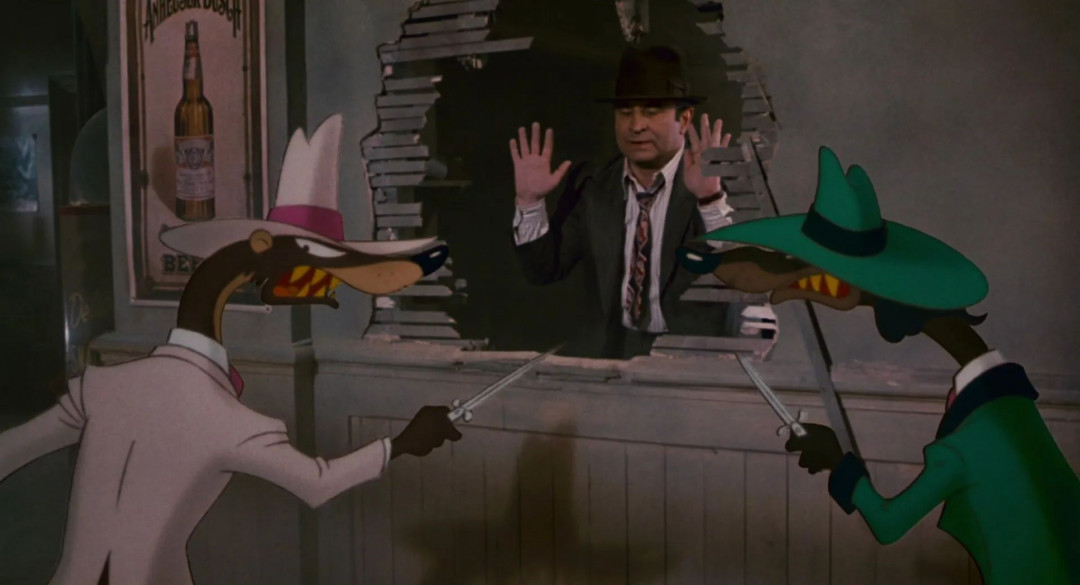 Directed by Robert Zemeckis, Touchstone Pictures
Directed by Robert Zemeckis, Touchstone Pictures
This one is for the Urban Developers out there. Who Framed Roger Rabbit is a masterful example of filmmaking, both through its storytelling and because of the technical ability of legendary animator Richard Williams. Underpinning the film noir plot in Who Framed Roger Rabbit is an alternative historical retelling of the highway-ization of Los Angeles poorer economic areas. This disastrous period of LA history saw thousands of people forced from their homes and cemented the rest of the city’s dependency on motor vehicles. The ‘toons’ in Roger Rabbit are second class citizens living in Toontown, drawn into existence by humans and existing only for our entertainment. The founder (and supposed owner) of Toontown is murdered in an attempted land grab by Judge Doom, who wants to demolish the suburb to make way for a highway, in pursuit of his vision of a “beautiful” LA with “strings of gas stations, inexpensive motels, restaurants that serve rapidly prepared food, tyre salons, automobile dealerships and wonderful, wonderful billboards as far as the eye can see!”
Idiocracy (2006)
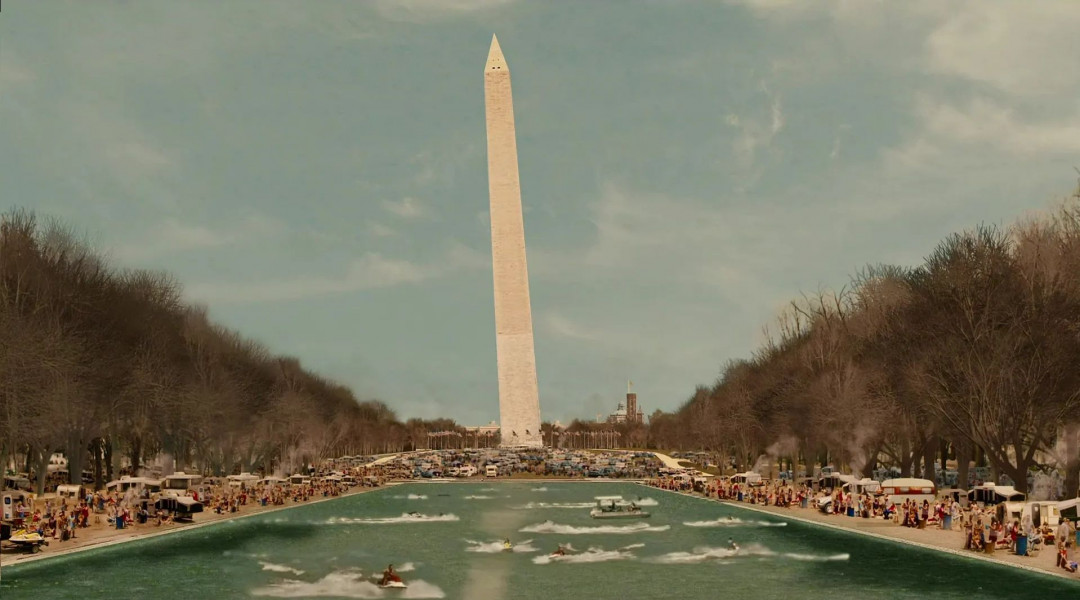 Directed by Mike Judge, Ternion Pictures
Directed by Mike Judge, Ternion Pictures
Just like Brazil and Akira, Idiocracy imagines a dystopian technocratic future, except this one is full of idiots. As the film explains, intelligent people are bred out of existence due to the over-spawning of, uh, less intelligent people. The future that Mike Judge paints is just as horrifying as any other. With no one left smart enough to be architects, complicated feats of engineering became a thing of a past, with buildings literally being held together with wires. New structures are completely fabricated, constructed out of that brightly coloured polyurethane playground equipment is made out of. Idiocracy is also a world where people said “screw that” to social consciousness, opting to look after their own desires and motivations, resulting in the world being in a constant state of humanitarian crisis. Finishing this film, it’s clear to see this film isn’t an admonishment of the unintelligent, but rather of the ideology of the individual – the etymology of ‘idiot’ comes from the Greek word for individual.
Paprika (2006)
 Directed by Satoshi Kon, Madhouse
Directed by Satoshi Kon, Madhouse
The word ‘masterpiece’ shouldn’t be used lightly, but there’s little else to describe Satoshi Kon’s seminal flick Paprika. Fantasy and reality clash with horrifying results, as a device meant to treat psychological conditions is stolen from a laboratory and used as a weapon. The device allows the thief to enter the dreams of its target, and soon people are falling victim to induced psychosis as the barriers between reality and fantasy erode away. The dream world architecture appears real, but the longer the characters dwell the more the structures began to twist in shape, defying their physical spaces. What sets Paprika apart from its contemporaries is how visually striking the entire film is. From the opening scene where Detective Konakawa battles through his trauma like a character in a Hollywood blockbuster, to the deranged dream parade building in size throughout the film and suddenly bursting into the public’s collective consciousness, Paprika is a paragon of modern surrealism.




 Indonesia
Indonesia
 New Zealand
New Zealand
 Philippines
Philippines
 Hongkong
Hongkong
 Singapore
Singapore
 Malaysia
Malaysia







